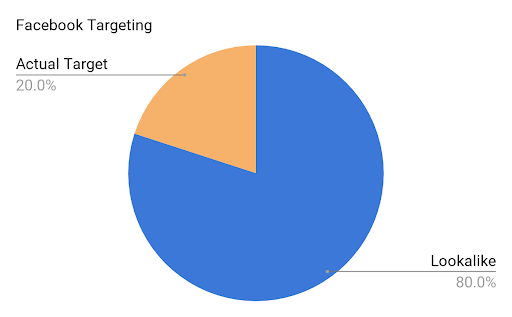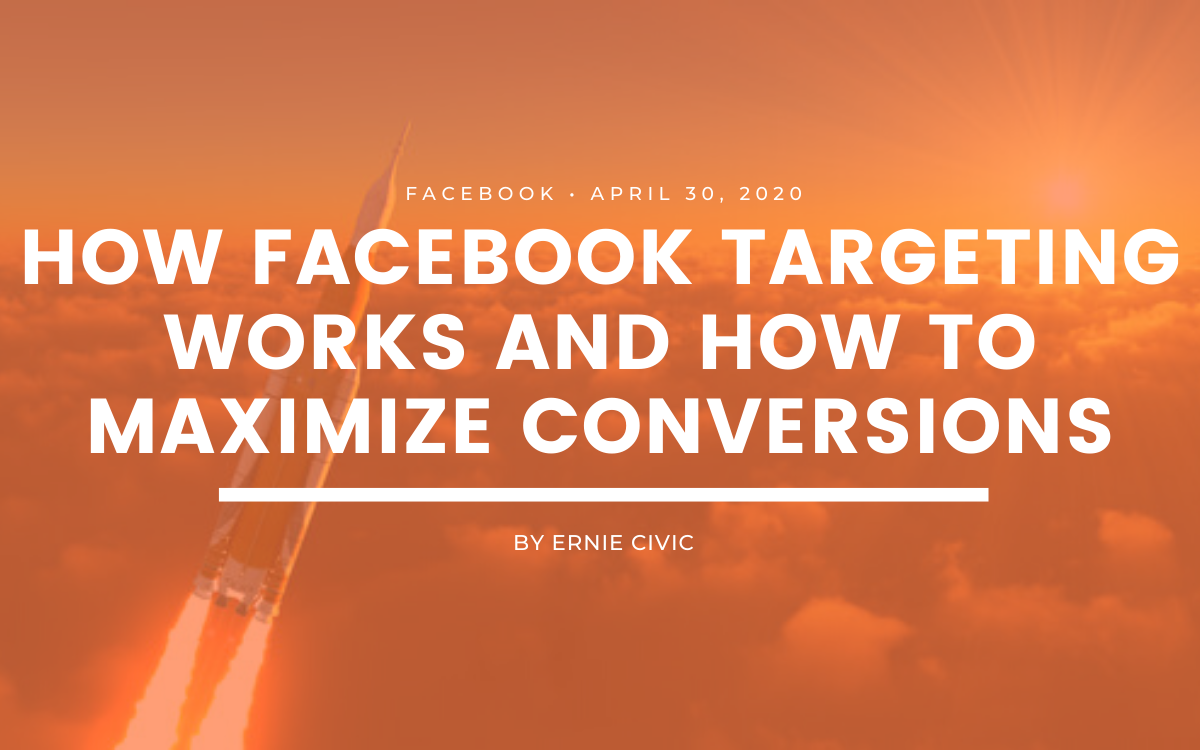How Facebook Targeting Works and How to Maximize Conversions
2 min to read ✭ In this post, we will teach you how Facebook targeting works and how you can maximize conversions for your Facebook ads.
How Facebook Targeting Works
When we create an audience, let’s use a lookalike audience for example, Facebook creates two million users who mirror the selected list. We then expect Facebook to target two million users and serve these individuals our ads. However, Facebook does not operate this way and it only targets a certain percentage of those users. Why? Because the Facebook algorithm is designed to find people within that two million pool who are most likely to convert.

As the above diagram shows, the actual targeted audience that will see your ad is only about 20%. Now, I know what you are thinking. “Well, if I’m only reaching 20% of the two million users then I’m sure next month I will reach another 20% because Facebook is telling me that it found two million individuals. So I will just continue to run my campaigns until I reach the total amount.” That’s not actually how it works. What Facebook’s algorithm will do is continue to show your ads to the same 20% with micro-growth to the actual audience reach. Why? Because the algorithm has something called the “feedback loop” and the point of the feedback loop is to retarget these users again and again. Once Facebook determines which audience will most likely convert or perform the best it sticks to these users until the end.
This is typically where you see an increase in frequency and your cost per results. So how can we combat this algorithm and try to bypass the feedback loop? One way to do so is by increasing your budget by 20 to 30 percent. When you give Facebook more money it gives it the ability to reach further, therefore expanding your reach more.
How to Maximize Conversions
The strategy that has proven to work the best has been the implementation of the sandbox method. Essentially this is giving Facebook the most freedom and leniency to configure which ads work the best and which audiences are the strongest.
You can implement the sandbox method in two ways. One way is to manually create additional campaigns and creative to test against your existing campaign. The second option is to click the “split” test button when creating your campaigns in the beginning. Once you set this up you will have the ability to let one campaign run until ad fatigue kicks in or 20% maximum reach has appeared. During this time you should be implementing your sandbox method by creating or split testing various campaigns, ads, and creative to see what resonates with your audience. Once you have determined which ads are bringing in lowest CPCs or the best conversions, you will take the winning strategy and implement it to the original campaign.
By doing this, you give the algorithm best in class work which should have a high relevance score, engagement on ads, and recorded conversions. This gives those users being targeted by the feedback loop new ads to see which will get them to purchase or donate since they are seeing ads that are more relatable to them. Once this starts to occur and you begin to close more of the audiences found by Facebook, the algorithm will start to expand its reach to an additional 5%. The number of your estimated audience will now continue to increase as you keep implementing new creative to your B test campaigns.





